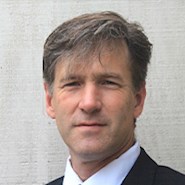-
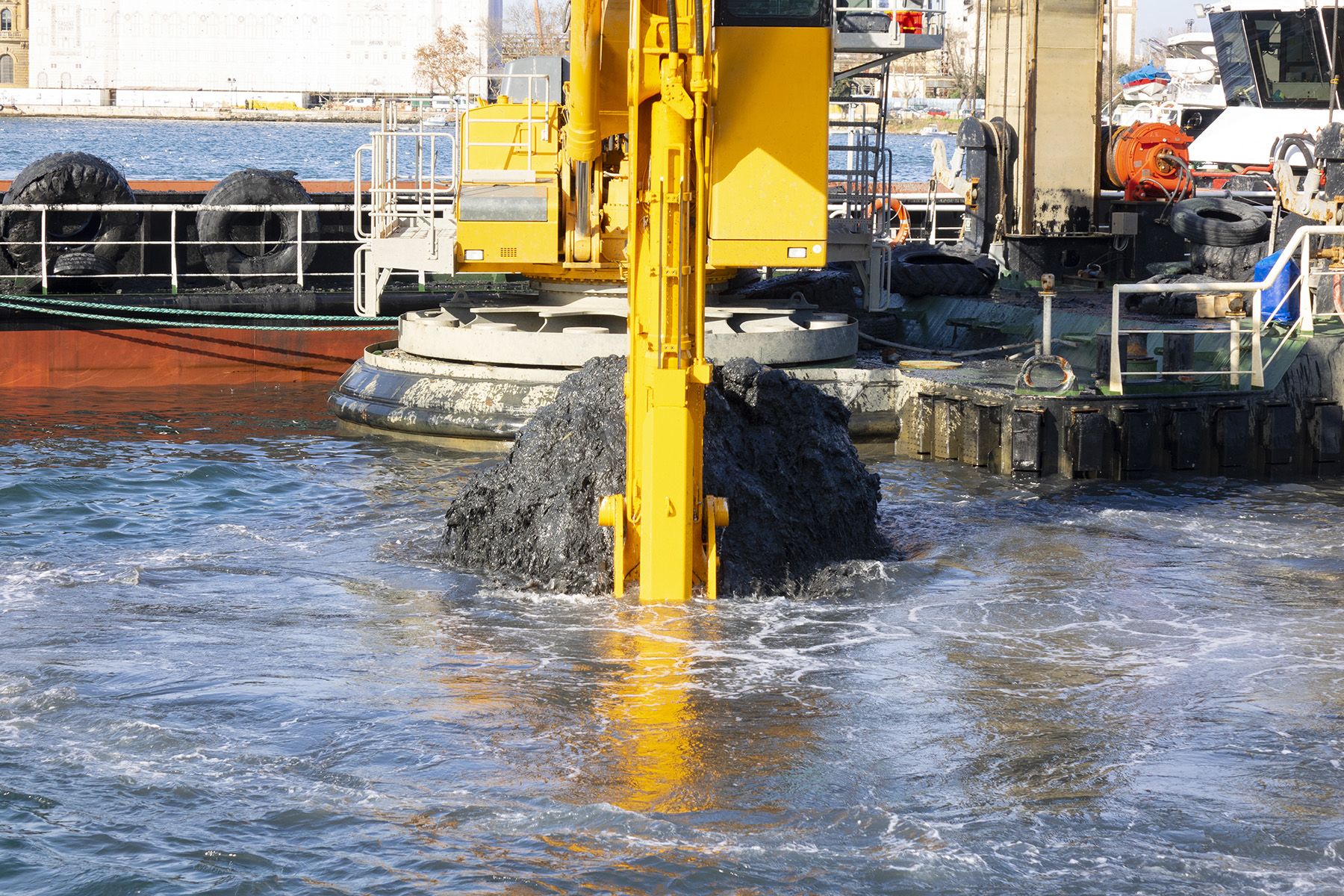
Sedimentation buildup is a growing concern for civil engineers. (Photograph courtesy of istock.com/Batuhan Toker)
By Michael Whelan, P.E., M.ASCE, and Rollin Hotchkiss, Ph.D., P.E., BC.WRE, F.ASCE
Dams have been with humankind since antiquity. As a relatively simple means of turning flood- and drought-prone rivers into reliable water supplies, dams are one of our earliest ways of harnessing and controlling water, making them essential elements of society. However, sediment buildup within reservoirs is a growing concern that civil engineers are working to resolve.
In the 20th century, dam construction in the United States and across the world occurred at a regional and industrial scale, furthering our collective ability to impound water in a reliable manner. The benefits, such as potable water supplies, recreational lakes, hydropower, and flood control, have grown proportionately.
But there are trade-offs. For example, scientists have become more concerned about the effect of dams on fish movements, and some dams have been removed to restore fish to their historical areas.
Another trade-off is the dams’ effect on the natural movement of sediment. Rocks, sand, silts, debris, logs, and the like — all natural products of the landscape — are transported by flowing river water and shaped into banks, sandbars, beaches, and mudflats along the way. Dams stop this movement, which creates two opposing problems on either side of the dam.
Downstream, the natural source of sediment is cut off, starving a river of the sands and silts needed to sustain riparian ecosystems. Upstream, the sediment gradually builds up because it cannot effectively pass through the dam.
The accumulation of sediment presents multiple problems: It takes up space intended for water storage; it collects around hydropower installations, hindering their operation; it adds load pressure to the dam; and it makes the reservoir shallower, reducing recreational access. The loss or degradation of legacy water infrastructure will impose significant financial and environmental burdens on future generations, compounded by the fact that replacement sites for most dams and reservoirs are not readily available.
The buildup of sediment behind dammed reservoirs is by no means a new problem, but it has historically suffered from a lack of purposeful funding, in part because it is often such a slow process that previous generations were able to leave it for later. Today, the problem is growing in urgency at the federal level and among water suppliers.
For example, consider Lewis and Clark Lake, which is on the border between Nebraska and South Dakota. Impounded by Gavins Point Dam, the lake accumulates approximately 5 million tons of sediment annually, forming a growing delta in the western, upstream end of the reservoir. Silts and sands that historically would have flowed to the Mississippi River, south to Louisiana, and ultimately across the Mississippi Delta, where they would help rebuild Louisiana’s unraveling coastline, are blocked. Sediment builds up in the lake, reducing essential water storage capacity and causing loss of agricultural land upstream.
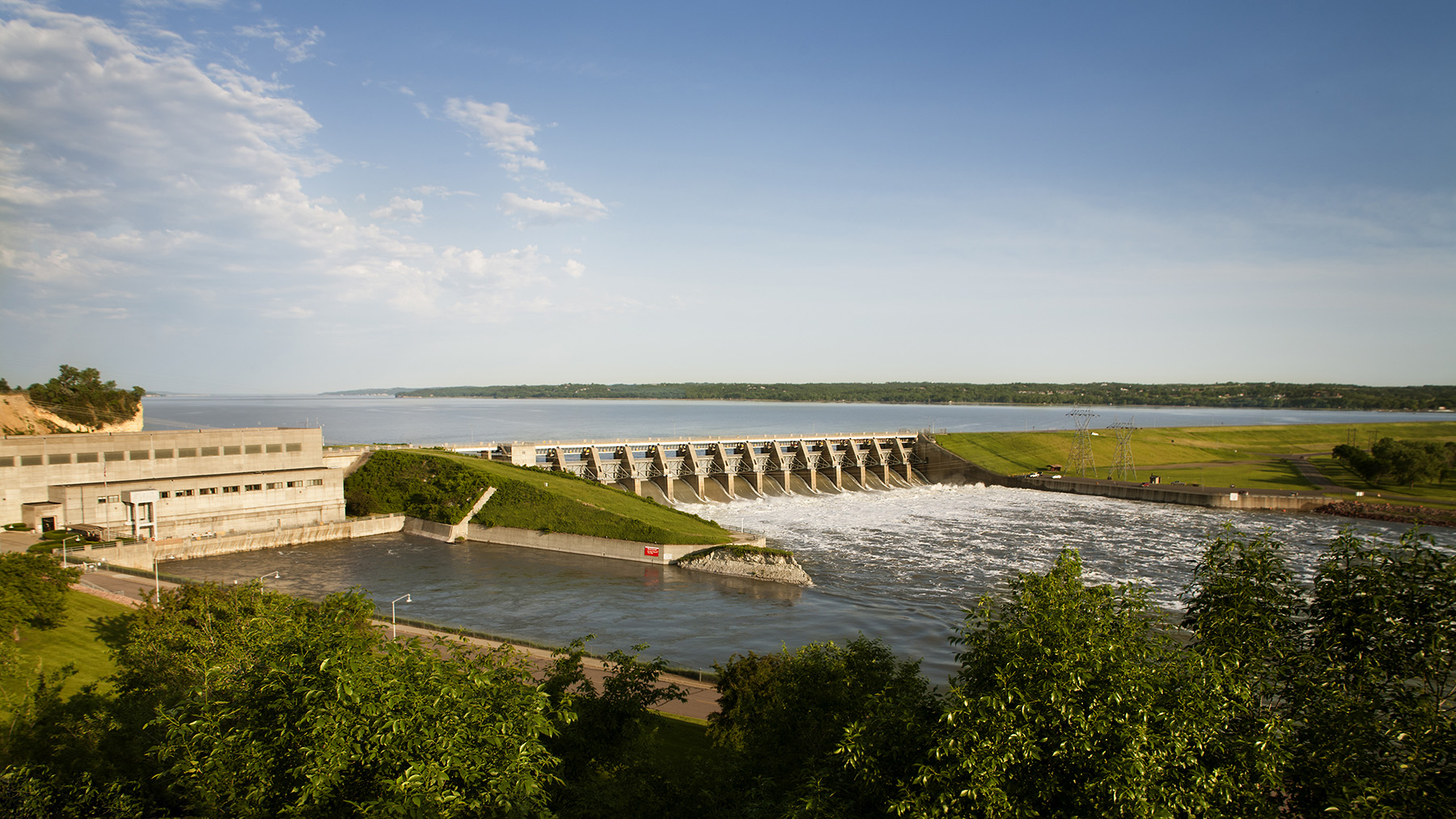
A similar storyline has developed with Southern California’s Matilija Creek, where so much sediment (nearly 9 million cu yd) has accumulated that the lake is now effectively filled up, and its dam has long been considered obsolete and a candidate for removal. All the trapped sediment — silts, sands, gravels, and cobble-sized stones — is prevented from reaching the Ventura River and the downstream estuary and coastline habitats it feeds.
There are a variety of established strategies for managing or mitigating sediment accumulation in reservoirs. For one, the reservoir and dam infrastructure can (and in some cases must) be adapted or modified to accommodate the increased volume of captured sediment.
Meanwhile, strategies for reducing or removing sediment generally fit into three categories:
- Improvements to upstream areas.
- Excavation or dredging of sediments from the reservoir.
- Sediment passage through the dam to the downstream riverbed.
Upstream improvements
It is possible to reduce the amount of sediment flowing into a reservoir from upstream areas by installing erosion-resistant ground cover, stabilizing stream channels and landslide-prone slopes, and revegetating upland areas. Another strategy is to construct “check dams” at selected upstream locations so that sediment collects in accessible basins from which it can be regularly removed before it reaches the reservoir. These strategies can lessen the influx of sediment into the downstream reservoir, although in the case of the ground cover option, wide swaths of upland area need to be covered in order to be most effective.
Bedload interceptor technologies are emerging as an alternative sediment management method. In this approach, a collection structure (hopper, bin, pit, trough, etc.) is installed in the riverbed to intercept and collect sediment as it is being transported by the river’s current. The collected sediment can then be moved to a disposal location or rehandling facility.
Dredging and excavating sediment
Sediment can be removed by hydraulically pumping it as a slurry or by dredging submerged deposits using mechanical clamshell-type buckets. It can also be removed by excavating deposits that are reachable by standard earthwork equipment. These methods require a thorough understanding of the physical nature of the sediment being removed, such as its grain size and the amount of large rock or debris (if any) that will be encountered.
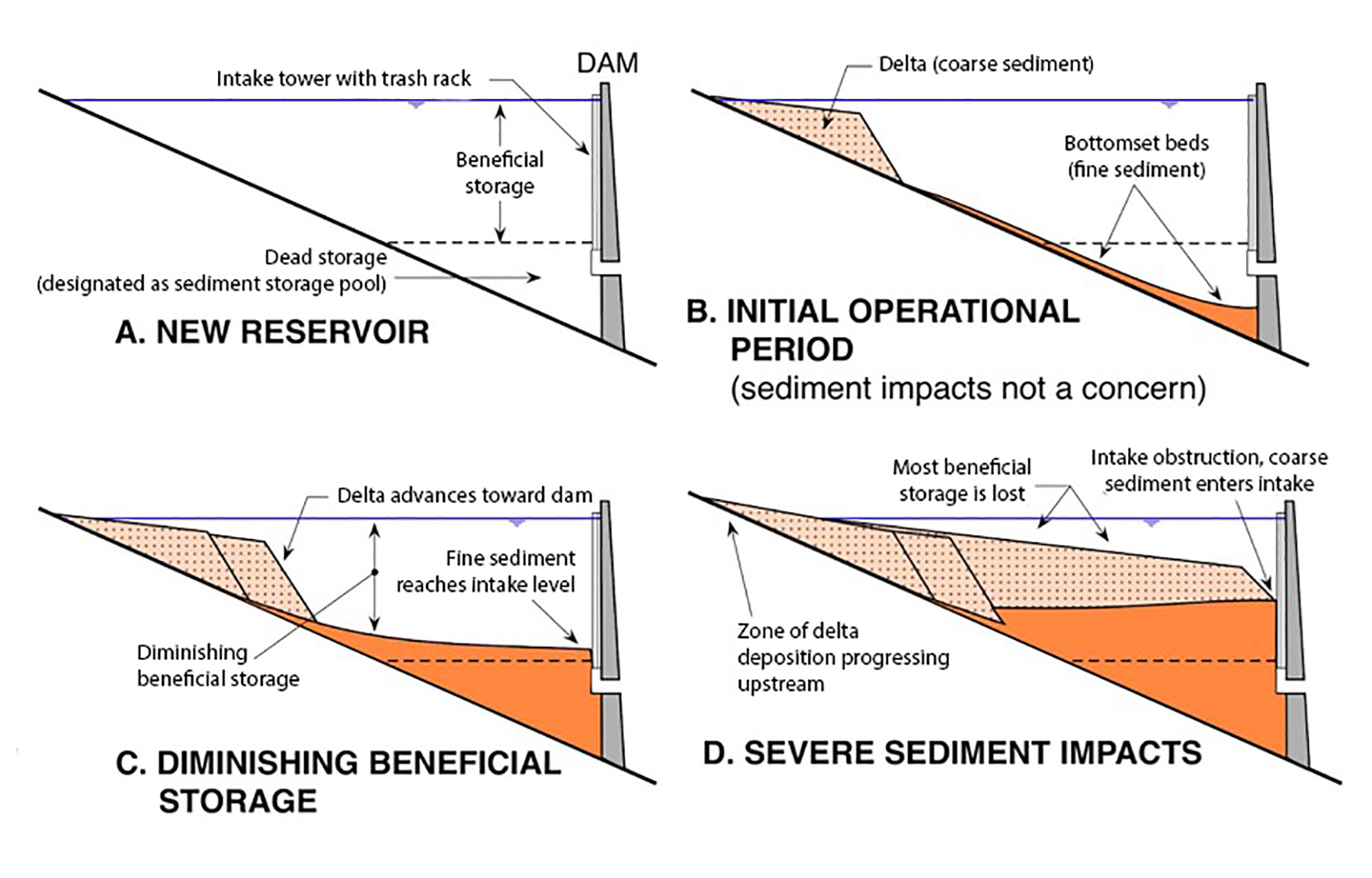
Generally speaking, the hydraulic dredging method is better suited to removing large quantities of fine sediment, provided that adequate space is available for dewatering and discharging the resulting slurry. Mechanical dredging methods can be appropriate for smaller quantities, areas that require more precise removal, or deposits with large debris.
The removed sediment then needs a suitable placement or disposal location. In many cases, a designated area is developed specifically for sediment stockpiling and permanent disposal, although finding beneficial ways to reuse the material for grading, construction fill, or habitat improvement can reduce costs significantly.
Sediment passage
Theoretically, it is most cost-effective, sustainable, and environmentally appropriate to find ways to pass sediment directly into the downstream river channel (where it naturally belongs) by flushing or sluicing the sediment through dam outlets, tunnels, or bypass channels. This strategy has the advantage of restoring the natural process of downstream sediment transport that was blocked by dam construction and returning sediment to the otherwise depleted downstream river reach where it can facilitate development of natural riparian habitat. Savings can also be realized by minimizing transport distance for the sediment.
While this approach has been used with some success, its execution is not as simple as it might seem. For one, it requires the dam to have preexisting openings or bypass channels that are suitable for sediment to flow through. Furthermore, passing a load of accumulated sediment downstream may overwhelm the downstream river channel if it is done too quickly. Ideally, the sediment is delivered downstream at a rate or quantity that is similar to its historic transport rate and with timing similar to the rate that it enters the reservoir.
Permitting challenges
Cases of poorly implemented reservoir sediment discharges have caused legitimate concerns among regulatory agencies about the possible negative effects of sediment release on downstream ecosystems. While downstream sediment discharge is practiced with some frequency internationally — it is a key element of China’s management of the Yellow River, for example — it faces significant regulatory hurdles in the U.S., largely because the Clean Water Act emphasizes the potentially damaging influences of sediment on water quality and downstream ecosystems and communities.
Downstream flushing of sediments is typically considered by the CWA as a discharge of dredged material from a point source, subjecting the practice to a challenging set of federal, state, and local regulatory reviews.

Fundamentally, implementing a downstream sediment transport strategy requires acknowledging that sediment, if released in a strategic manner, is not a pollutant but in fact can act as a beneficial resource for the downstream river system. An important element of the permitting process in the U.S. is de minimis sediment release, a concept established by the U.S. Army Corps of Engineers to approximate the natural loading rate of sediment transported in a river system and into a reservoir.
Under this conceptual foundation, releases of accumulated sediment loads can be authorized if studies and modeling show that de minimis standards are met for a specific river system and geographic area such that sediment release can be timed to prevent degradation of aquatic resources.
The nation’s sediment management needs for its vast network of reservoirs are becoming severe enough that a facilitated permitting process will be beneficial, if not critical. Some potential regulatory strategies include:
- Maximizing the use of regional general permits that allow for regularly managed releases of sediment from reservoirs where minimal impacts to aquatic resources are expected. This would be similar to current RGPs authorizing desilting of flood-control channels, maintenance dredging of water bodies, beneficial reuse of dredged sediment, ecological restoration activities, and emergency activities.
- Facilitating collaboration and knowledge transfer for reservoir sediment management across permitting agencies and technical fields. Elements of this approach would include developing a reference database of existing reservoir sediment permits, screening tools to identify high-risk sites, and experts regularly convening to review and provide instruction on best practices.
- Recent and future dam removals in the U.S. will provide data for regulatory flexibility for cases in which moderate, short-term waterway impacts lead to greater long-term protections. For example, plans for removal of the J.C. Boyle Dam on Oregon’s Klamath River include a 24-month compliance period during which temporary water quality impacts from sediment releases are allowed following the dam’s removal. (For more information on this topic, see “Construction begins on removal of 4 Klamath River dams” by Jay Landers.)
Funding and economic assumptions
The Cost of Rehabilitating Dams in the U.S., the 2023 report by the Association of State Dam Safety Officials, concluded that $157.5 billion would be needed to rehabilitate the nation’s nonfederal dams, and this cost will continue to rise as work is deferred. It is sobering to realize that these costs do not account for those needed to manage sediment buildup.
As stated above, the problem of sediment accumulation behind dams is not a new discovery. It was well recognized by the government when the nation’s federally owned dams were originally constructed in the first half of the 20th century. Unfortunately, money for long-term sediment management was not set aside due to economic assumptions used in the cost-benefit analyses of the time.
Exponential discounting has long been used in federal economic modeling in such a way as to value the immediate present (at that time) greater than future benefits — an economic framework that tends to discourage investment to avoid problems. Furthermore, federal economic evaluations have emphasized geography first and foremost and de-emphasized the larger costs of watershed impacts and the future threat of possible dam decommissioning.
Similarly, the problematic impacts of sedimentation have been historically underemphasized by federal economic analyses. The result is dams were rarely designed with sediment controls in mind. For instance, few dams include low-level outlets for sediment release.
“New Economic Paradigm for Sustainable Reservoir Sediment Management,” a 2023 study published in the Journal of Water Resources Planning and Management (Vol. 149, No. 2), Razieh Anari, Ph.D., et al. presented a new economic model that evaluates the true costs of sediment building up in reservoirs. The authors note several factors that are not considered in traditionally applied cost-benefit evaluations, including the point that economic analyses should include upstream and downstream impacts, not just the reservoir itself. The authors also propose a more appropriate model for economic discounting that recognizes that as water storage space diminishes with increasing sediment buildup, the value of that remaining capacity rises.
Stream-carried sediment inevitably accumulates behind constructed dams, although in many cases it occurs slowly. Over time, however, the accumulation can start to present significant problems to reservoir capacity and dam operations. Federal attention on infrastructure funding — including the pending reauthorization of the National Dam Safety Program as part of a broader Water Resources Development Act that Congress could pass this year — provides an avenue to fund sediment management strategies. Accompanying steps to facilitate the necessary permitting will also be beneficial.
SIDEBAR: Working toward solutions
In recent years, there have been several large-scale sediment removal projects involving hydraulic dredging to local disposal areas.
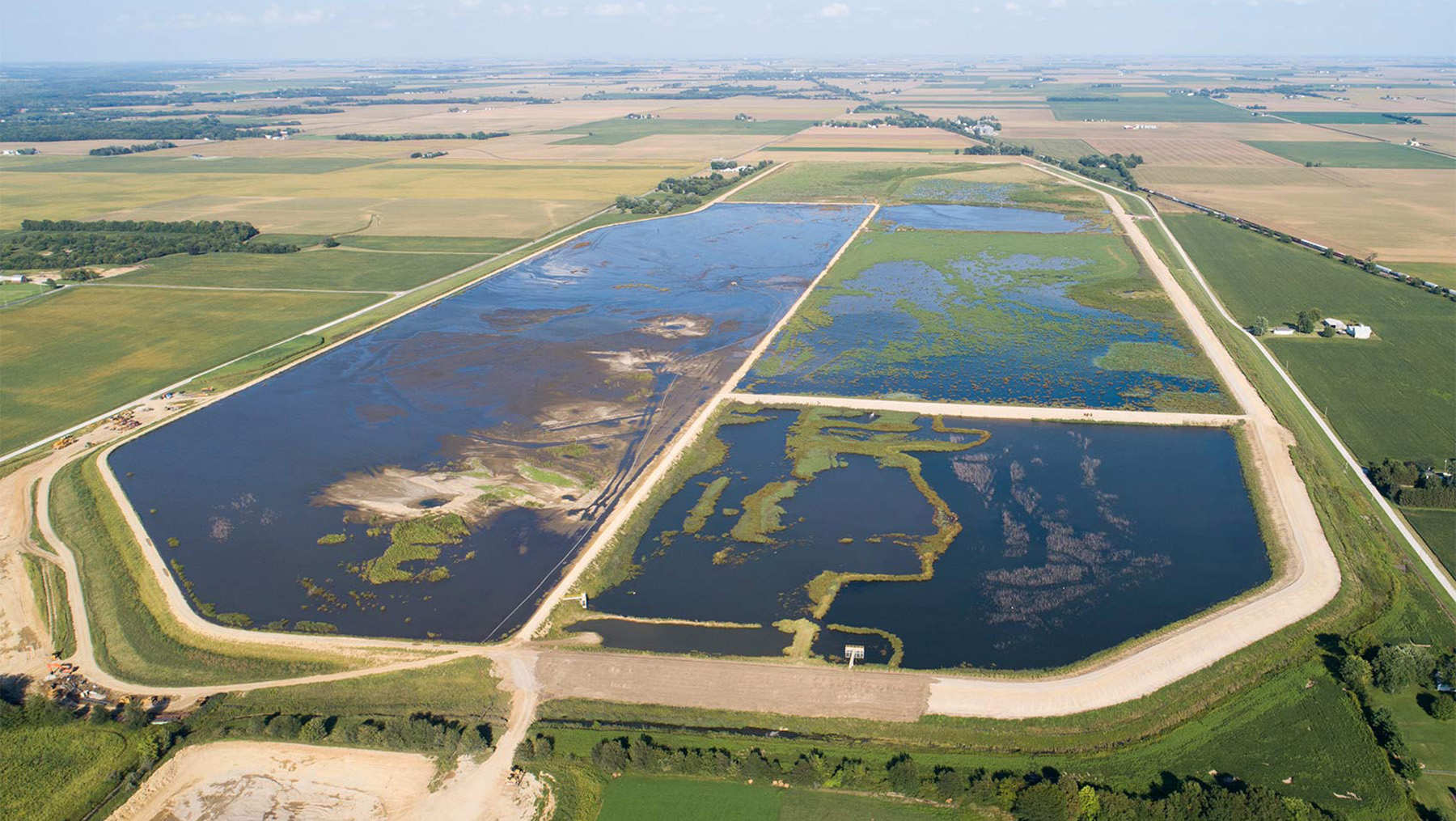
to the Oakley Sediment Basin, below, for final storage. (Photograph courtesy of the City of Decatur, Illinois, and Great Lakes Dredge & Dock)
- The city of Decatur, Illinois, commissioned the hydraulic dredging of 10.5 million cu yd of sediment from Lake Decatur to recover water storage capacity and remove sediment near the water treatment plant intake.
- The Kansas Water Office collaborated with the U.S. Army Corps of Engineers to develop a multiphase sediment management plan for the John Redmond Reservoir in eastern Kansas. It entails the eventual removal of 3 million cu yd of sediment to recover water storage capacity while improving related aquatic habitat. In the first phase of work, approximately 600,000 cu yd was hydraulically pumped to various upland confined disposal facilities that are intended to revert to their prior use as farmland after sediment placement is completed.
- Denver Water hydraulically dredged more than 200,000 cu yd from Strontia Springs Reservoir in Colorado’s Waterton Canyon. During the dredging program, Denver Water maintained regular communications with public users of the popular South Platte River Trail that runs through the canyon, as the trail needed to be temporarily shut down during dredging and sediment pumping operations.
- Guernsey Dam in Wyoming is an example in which direct sediment flushing has been used regularly and successfully to transport sediments from the impounded reservoir into the downstream river channel. Once a year, the Bureau of Reclamation conducts the “silt run”: Water is released through the dam at a level and rate that carry significant amounts of suspended sediment along with it. In addition to removing sediment from the reservoir, the sediment-laden water provides benefits to downstream water users by helping cover, or seal, the irrigation canal beds that had been subject to scour and erosion. The result is a significant reduction in water loss from infiltration.
SIDEBAR: Research and innovation
Over the past decade, the Bureau of Reclamation and the U.S. Army Corps of Engineers have encouraged technological innovations for reservoir sediment removal through research and innovation prize competitions, including Reclamation’s multiyear (2020-22) Guardians of the Reservoir prize challenge conducted in partnership with the Corps, the NASA Tournament Lab, and HeroX. Submissions included methods to transport sediments through capsule pipelines or as compressed cylinders, use of a submersible “snake” or flexible augers to access and remove sediment, and application of liquid nitrogen and electrocoagulation to bind the sediments and facilitate their collection.
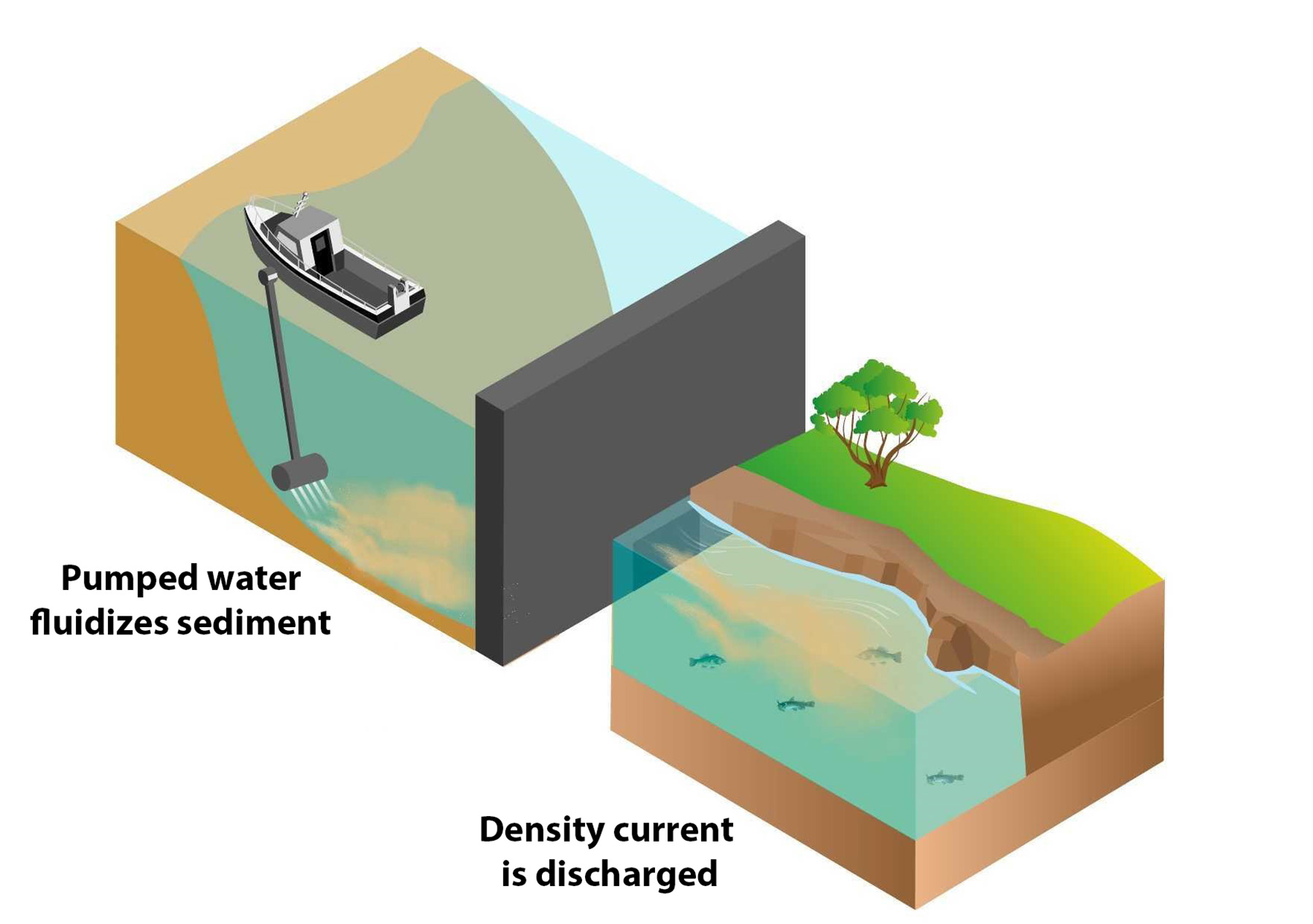
In addition, the Corps, in partnership with the Kansas Water Office, is planning in 2025 to demonstrate a water injection dredging technique at Tuttle Creek Lake in Kansas. This is a method of sediment redistribution in which a dredging vessel pumps water into sediments at the bottom of the channel to fluidize them, allowing them to undergo gravity-induced flow into deeper water areas. The water injection will create a near-bottom layer (density current) with a higher density than the surrounding water. This layer will then be transported downslope by gravity toward the dam where it will pass through the opened discharge outlet.
Michael Whelan, P.E., M.ASCE, is a principal engineer at Anchor QEA, in Lakewood, Colorado. Rollin Hotchkiss, Ph.D., P.E., BC.WRE, F.ASCE, is a professor in the Civil and Construction Engineering Department at Brigham Young University in Provo, Utah.
This article first appeared in the March/April 2024 print issue of Civil Engineering as “Facing the Challenges of Reservoir Sedimentation.”



